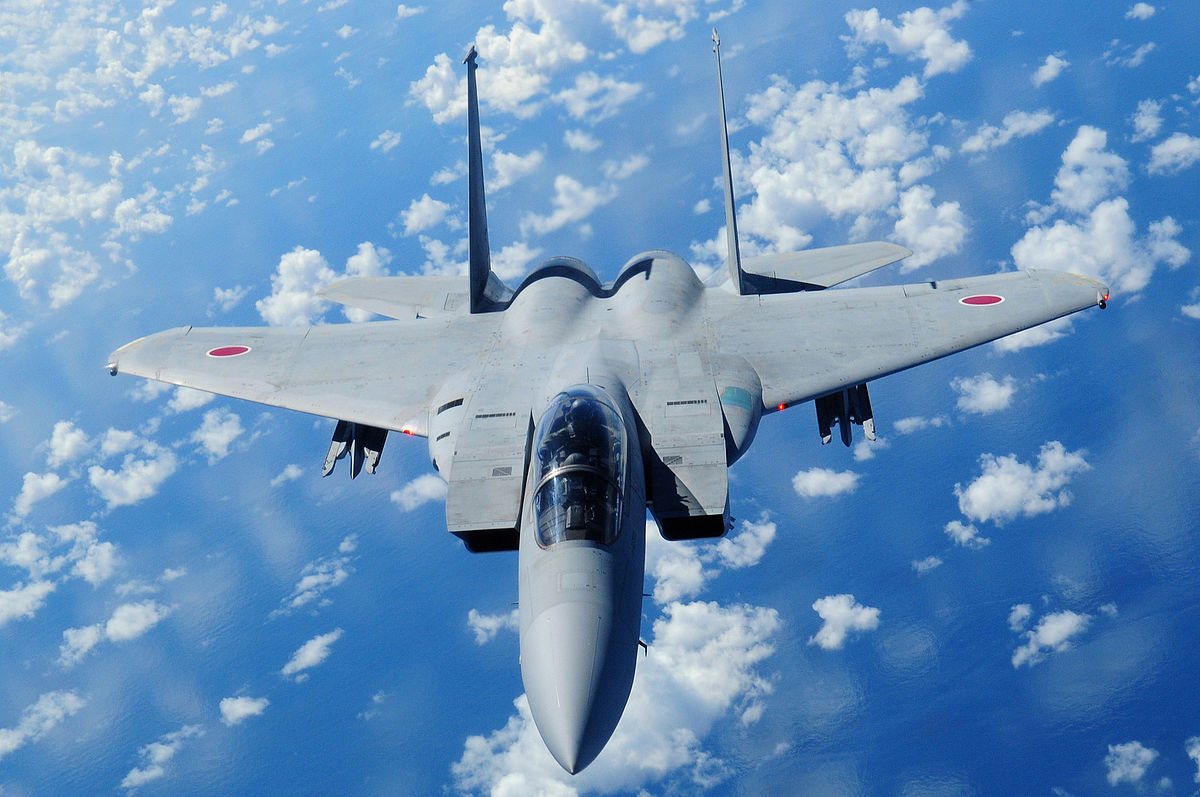Japan has decided to equip its 4th generation F-15J fighter jets with advanced electronic warfare (EW) suites for US$474.5 million to enhance its combat capability while operating in a contested and volatile region.
On September 7, the US Department of Defense (DoD) announced that it had signed a Foreign Military Sales (FMS) agreement with Tokyo under which Boeing will equip F-15s belonging to the Japan Air Self-Defense Force (JASDF) with the Eagle Passive Warning Survivability System (EPAWSS).
The development comes amid rising tensions between JASDF and the Chinese PLA Air Force (PLAAF) and the latter’s increased belligerence with Taiwan. The JASDF operates about 155 of the F-15J air superiority fighters, known as a dogfighter. The J variant of the F-15 is the country-specific F-15C/D model built by Mitsubishi in Japan under license.
While operating in airspace contested by cutting-edge 4+ generation and 5th generation warplanes of the PLA Air Force armed with lethal radar-guided air-to-air missiles, the F-15 is considered disadvantageous.
Unlike the fifth-generation aircraft such as the F-22 Raptors and F-35 Lightning II, which have stealth technologies that dramatically lower their radar signatures, the F-15J is way more susceptible to an attack by an adversary missile.
Although Japan has its fleet of stealth F-35s and the US has deployed its Raptors in the country that replaced the older F-15s based there, the F-15J is still the most crucial fighter jet in the region.
Even though the F-35 is stealthy and has sophisticated airborne networking needed for advanced combat, the F-15 is quick, has a long range, and has a larger payload capacity than the F-35.
The Eagle’s superior thrust and superb maneuverability would be a significant battlefield advantage for the JASDF in case of a contingency. Some military experts have gone so far as to say that these jets could outmaneuver the PLAAF stealthy J-20 Mighty Dragons.
Boeing contends that sophisticated avionics and electronic defenses like EPAWSS can reduce susceptibility to the point where fourth-generation aircraft are still valuable for today’s air defense environment. Earlier, the Strike Eagles of the US Air Force (USAF) had gotten similar upgrades, as previously reported by EurAsian Times.

With offensive and defensive Electronic Warfare options for the pilot, the EPAWSS will equip the JASDF F-15 fighter aircraft with EW technology to maximize mission effectiveness and survivability. Moreover, the plane often scrambles to intercept Chinese and Russian fighter jets.
For instance, according to data released by the Joint Staff Office of Japan’s Ministry of Defense in July, Japan Air Self-Defense Force (JASDF) fighters conducted 238 scrambles in the first quarter of Fiscal Year 2023. Of these, 66% were Chinese jets, while 31% were Russian.
Late last month, the Air Force scrambled fighters to monitor Chinese Air Force bombers and drones flying near the country’s southwestern Okinawa Island and Taiwan.
The frequent scrambling, coupled with the threat of a military confrontation that would perhaps drag Japan into the fighting due to its proximity to Taiwan and its allegiance to the US, Japan has been taking a long and hard look at its combat capability. This has triggered a massive hike in defense spending and some very high-end military acquisitions, including long-range missiles.
Bolstering the survivability of the F-15Js with an EW suite to bring it on par with the fifth-generation fighter jets since the two aircraft are expected to work in tandem.
Japan plans to acquire 147 F-35s, including a mix of the conventional F-35A and short take-off and vertical landing F-35B variants. Since the acquisition will take a while and the next-generation GCAP is still in the early stages of development, bolstering the defensive and offensive capability of the F-15 becomes significant.
How EPAWSS Will Ensure F-15’s Survivability
Experts in electronic warfare (EW) avionics from the Boeing Company will produce EW avionics for upgraded F-15 jet fighters used by the Japan Air Force to assist in defending the aircraft against radar-guided missiles.
In contested airspace, EPAWSS provides integrated radar warning, geo-location, situational awareness, and self-protection to find and destroy hostile aircraft, air-to-air missiles, and surface-to-air missiles. The F-15 can breach enemy air defenses because of its electronic countermeasures.
The all-digital EPAWSS is more reliable and maintainable than earlier F-15 EW systems while being smaller. EPAWSS is replacing the ALQ-135 EW suite of the F-15.
The EPAWSS uses contemporary computing, receiver, and transmitter technology to provide pilots with better information so they may act accordingly. According to Boeing, the technology represents “a transformational overhaul to the F-15’s survivability.”
The system is meant to give the F-15 pilot a mechanism to find, recognize, and jam opposing radar while deceiving the adversary about the F-15’s specific location and direction. Thanks to its wide instantaneous bandwidth and high-speed scan capability, it can detect all RF threat classes, including modern agile attacks and threats with a low chance of interception.
According to BAE Systems, its electronic countermeasures (ECM) toolbox uses techniques that have been successfully used for many years to defeat threats. It can be programmed to do so for both present and future threats.
The EPAWSS “makes the most of mission effectiveness and survivability for the F-15 in contested environments,” said Prat Kumar, Boeing vice president for F-15 programs. The system “further strengthens a competent, lethal aircraft.”
The new system guarantees the F-15E’s ability to survive contested airspace scenarios that the Air Force might anticipate encountering. The system is a crucial part of an effort to ensure the Strike Eagle’s continued viability after 2040.
- Contact the author at sakshi.tiwari9555 (at) gmail.com
- Follow EurAsian Times on Google News